Notes from a Seventies Survivor
In 2005 I was invited to a scholar/warrior dinner at a high school where I coached contact weaponry for an after school MMA program. Each of the students was to present a paper about martial artistry that they had written. The coaches were also to present some form of opinion or research. I just brought some weapons to use as talking points. When one of the coaches referenced Bruce Lee by pointing to the famous yellow jumpsuit picture, one of the more aggressive students looked at me and whispered, “Really, the little gay twerp in the tights—he was a fighter?”
I ‘shushed’ him and then whispered, “Dude that is their god. You can’t make fun of him. He’s like Jesus Christ to martial artists in my age group.”
He looked at me incredulously and then his eyes began to dart around, suddenly wondering at something previously un-guessed.
This past Tuesday night I walked into Jim Frederick’s Kenpo class while he was giving a talk on what it was like for a fighter to find himself back in the days before MMA, when everything was theory. He made some very good points on the importance of ‘dabbling’ in different martial disciplines as well as the importance of having a ‘base’ discipline and of setting reachable incremental goals.
This brought up another 1970s jealousy moment for me; like when I see the latest toys opened by my grandson on Christmas and think, “Wow, why couldn’t they have invented that when I was a kid?”
In a like fashion, I sat there listening to Mister Frederick, thinking, “Wow, if only there had been a guy like that in my life when I was a kid my training would have been so much more productive.”
For you young people who have grown up watching the kinds of fights that people of my generation were only able to theorize about, I offer you a grunt’s-eye-view of a decade that, in many ways, is best behind us; fortunately languishing in a hopefully unclouded rearview mirror.
Nobody Botha Me!
When I was emerging from the life of a fat wimpy kid into early adolescence I loved to sit up late on Friday night and watch UHF [off-brand local channels] TV while I waited for my father, a travelling salesman, to come home from his week on the road. I had yet to see a martial arts movie, had not even heard of one. I had, however, seen the pilot movie for Kung Fu, starring David Carradine.
There I sat, seriously considering how I was going to use my suddenly lean 118 pound body to turn the tables on the bullies that had beaten and humiliated my previously soft-shelled self for most of my life, when a strange darkened scene appeared on the screen. I thought perhaps the scene was from a new crime drama:
A man walked across a parking lot with a tall, thin longhaired brunette on his arm. It was cold and dark as they approached their car. Then, out of nowhere two burly Italian-looking guys in heavy winter coats rushed the couple intent on crime. The nondescript man, who I had thought might be the latest TV private eye, just stood there as his slender date dispatched the goons with well-placed kicks. The goons had had no chance; dispatched as if by magic! Then the scene switched to a group exercise in a TaeKwonDo school. After the class ‘kiad’ with authority the face of a little Korean boy appeared. “I take Jhoon Rhee. Nobody botha me!”
The advertisement was for a D.C. area ‘Korean Karate’ school run by a Korean immigrant who, I would later find out, had trained with Bruce Lee, and would teach a man named Ed to kick-box, resulting in Ed kicking my ribs in a decade later. At the time I was watching this commercial Ed was probably already in training. This is all the reflections of a Seventies Survivor. At the time all I saw was magic, a magic bullet for my problems.
I looked into karate enough to find out that only one kid in our school took it, and he was a doctor’s son. At that time karate was a rare and expensive proposition for an 11-year-old kid to finance out of his allowance, even if he saved his lunch money and ate extra when he got home.
I looked into Joe, and discovered that this skinny little dude could not even play soccer. Out on the field at gym class one of the other boys said, after seeing Joe attempt a simple ball-stop, “Karate can’t be too good if you can’t use it to stop a ball!”
Un-dissuaded by this poor soccer demonstration on the part of the school karate master I wanted to be friends with Joe. This to me is the essence of the Seventies when I look back. We were a generation of people that believed knowledge naturally translated into power. I had seen the moonwalk [not the pedophilic stage dance, but the actual walk on the Moon that orbits Planet Earth] recently and therefore believed in what was essentially magic.
Joe and I became friends and I was invited to play with him at his rich father’s mansion over in a real nice neighborhood. I just knew that some of Joe’s karate would rub off on me. What I discovered, was that Joe was a victim of bullying as well. He had two older brothers: one big and aggressive; and another nearing adulthood and clearly insane. Karate had been his attempt to protect himself from these two. Unfortunately, as I saw when Joe was attacked with a vacuum-cleaner pipe on my first visit to his house, by a brother who was basically a violent man, karate did not get the job done when the attacker is essentially a member of a predatory, alien species.
Joe, however, had hit upon a backup plan. He had no real interest in hanging out with me. I had been brought home as a plaything for his insane older brother. Joe was now free to do whatever he did while I hung out in the Apartment for the Insane on the third floor with his older brother. Bro had two obsessions, the survivability of high-end stereo systems, which he tested by throwing them out the third story window; and the survivability of his grandfather, who he claimed was a war criminal and who he planned on assassinating with lawn-care equipment…
Now, hanging with Joe’s bro was entertaining, and Joe did eventually KO an opponent in a fight. You see, the old lady down the street had this obnoxious seven-pound poodle who tried to bite Joe’s ankle, and Joe KO’d it with a side kick. Karate did at least have redemptive canine stopping power.
Wit Dese!
In pursuit of self-defense advice I approached Walt, our elementary school janitor, who walked past my house on his way to the bus stop. I asked Walt how he defended himself. He said, “I box ‘em wit dese!” as he held up two large fists.
Impressed, I was soon at the magazine stand buying boxing magazines. I then discovered that my mother liked this famous boxer named Ali, and I was permitted to stay up and watch the occasional live network broadcast championship bout with her. I soon learned to hate Ali. He was bigger than his opponents, just like the teens that picked on me were bigger than me. He was also very insulting, calling his opponents names, like the teens who picked on me. I sat and rooted for the doomed opponents as they chased Ali around the ring while Mom cheered on America’s hero.
Then, before one Ali fight, they announced that the Lightweight Champion, Roberto Duran, would be defending his title. This guy was filmed skipping rope in a one-legged squat, and recounted how he once swam a river, ate a bunch of stolen bananas, and then swam back across the river without drowning. He then went into the ring and destroyed his opponent in seconds. My mother was horrified at this little caveman, who declined to prance, dance, and clown like America’s hero. But I now knew what I wanted to be; that vicious, freakishly conditioned little caveman who sends people away on stretchers!
On that evening, in my adolescent mind’s eye; boxing, once the hated run-and-hug clowning art of Ali, had become the destruction of rivals with extreme Panamanian prejudice! I became obsessed with boxing, and, when my parents would not let me go to a gym I got them to compromise with a punching bag, then another. Eventually when we moved to Washington PA my father lined up a coach for me, Reds Foley, an old-time pro who coached at the YMCA.
The Death Match People
By the time I was a teenager in the mid 1970s I was a psychopath who picked fights with any jock he could get his hands on. I did not think of myself as a bully, but a hunter of bullies, although the victims of my comic book worldview would have surely disagreed. I had quizzed Reds about karate, knowing that karate people shared the boxing room at the YMCA. He was not pleased that I was interested in fighting ‘outside of the ring.’ To him, and many boxing coaches, karate was just a foolish indulgence of the street-fighting punk mentality. A boxing coach’s idea of self-defense has generally been, ‘removing the problem youth from the problem environment and giving him a profitable problem, in the form of an opponent, to take his caveman impulses out on.’
Reds only said one thing to me about karate, “Damned karate people are always scuffing my bag up with their shoes!”
My friends, though, all practiced, or aspired to practice, ‘martial arts’ the new mid-Seventies term for karate. You must understand that this decade even had a hit song titled Kung Fu Fighting! These friends all assured me that boxing was useless, and that martial arts ruled. Various stories of martial arts accomplishments, mostly involving Bruce Lee and his mysterious teachers, were put forward as evidence of martial arts superiority over boxing. I can remember these statements like it was yesterday:
I was taken on a pilgrimage to a martial arts supply store in Pittsburgh, where I saw a fat long-haired man drawing diagrams in the air while he meditated. My friends assured me that Roberto Duran would have no chance against this ‘death master’. I recalled thinking to myself that Duran would not be intimidated by the ethereal exercise of the ‘death master’s’ power.
I was shown a Bruce Lee film, Game of Death, and told that the film had to be slowed down so that viewers could actually see his techniques. He was that fast! How could Ali compete with that? All of Ali’s punches could clearly be seen on film! If Lee had actually demeaned himself by fighting on network TV none would be able to see the punches let alone the kicks!
I was told that the Chinese masters who had taught Bruce lived in trees in communist Red China, from where they would leap down and kick to death entire platoons of machinegun-armed Chicom soldiers!
I was told that Bruce Lee met Ali in a secret death match and that Lee had graciously permitted Ali to live by applying some kind of joint lock and making the big man submit. I recall thinking, that even though I hated Ali, that Lee was seven weight classes in the wrong direction to accomplish any such thing. I also could not imagine letting Ali live! If Ali called Duran names, Roberto would surely wait for the big man to nod off poolside at the hotel and then drown him in the deep end…
I was then told, most ominously, that Lee had betrayed his Chinese masters by teaching my friend’s teacher, and had been ‘dim maked’. An assassin of the Chinese Masters had touched Lee on the lip, and he had died some days later from swelling of his brain.
Wow! I could not argue with any of this stuff. It was all secret knowledge passed from master to student.
I picked up some martial arts magazines and began reading articles, trying to fathom the mysteries. The local martial arts masters did not want to fight me until I did all of their prissy dances and earned the right to wear their colored belts. This reeked too much of Ali for me; as if that clown had opened a gym and was teaching insulting poetry and dance. The magazines usually had one article a month critical of boxing. One article discussed the superiority of the back-fist over the jab.
That last statement gives an indication of how backward things were. Guys that I knew who practiced martial arts in the 1970s did not even use the term jab. They threw back fists and ‘lunge punches’ and ‘reverse punches’. Jabbing was something ineffective that boxers did while they ran away from the opponent. I know instructors now, who learned in the 1980s, after kickboxing had brought boxing into the American martial arts [I realize that things certainly moved faster in bigger cities, and that some of my late 1970s experiences are probably analogous to an LA resident’s late 1960s experiences.] who do not realize that they are practicing a hybrid art when they tell their karate students to jab.
Emerging from the Age of Martial Fantasy
There are some real problems with using any combat sport as a self-defense model. MMA is the best sport model yet, but still offers some warped lessons and has its detractors. I just want people to remember what it was like for a young man in the Seventies who wanted to learn how to fight. The martial arts world was a semi-contact theoretical library inhabited by secretive charlatans and deluded disciples who engaged in an awkward sniping debate through their students.
MMA might not be perfect. But consider the world before MMA, when every martial artist on the planet thought it was impossible for a big burly man to grab and pummel a woman, child, or geek who knew the magic of karate. If nothing else, MMA teaches us that some big mean freak can take a slicker fighter against a fence or to the floor and beat on him, even when they are the same size.
Perhaps the reason why I have delved so deeply into contact weaponry, is nothing more than a reflection of the surreal decade I came of age in. For weaponry is the last martial arts frontier of the fantasist: where size does not matter; 90-year old women can knock offensive linemen across the room with a flip of their wrist; and there is always the unproven refuge of the weapon that is too dangerous to spar or fight with, permitting the charlatan to say, “Well, I cannot demonstrate my epon, because you would die!”
When my fighters look at me and shake their head after more MMA heroes and martial arts masters decline to spar with them, I can see in their eyes that they can smell the fear. I just want those guys, those stick and blade fighters that cannot get the MMA monsters and martial arts masters to mix it up with weapons, to realize, that it is not physical pain that engenders this stark, unmanning fear. When a pro MMA fighter backs down from a stick fight with a 14-year-old girl, or when a sword master claims to be too deadly to spar with a mere stick fighter, it is not fear of pain that deters them. When the men who safeguard the sacred arts of the Filipino dueling masters refuse to fight a 120 pound American teenager who grew up fighting with a stick, they do not shiver for fear that their twenty pounds of armor will fail against the t-shirt armored youth—for it will not.
What these men fear is the death of their fantasy. Their masters came of age in a time of fantasists and charlatans; the Nineteen-seventies, when movies became more real than reality, and when athletes gained fame for their interview, not their accomplishments. There may be some fear of pain or injury. But even the most violent maniacs harbor these fears. Remember that these simple animal fears are nothing next to the cultivated dread of the dreamer, afraid to wake from the cocoon of his fantasy, of his Bruce Lee reality.
The Punishing Art




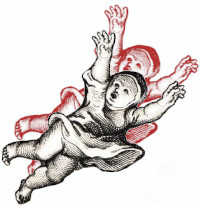
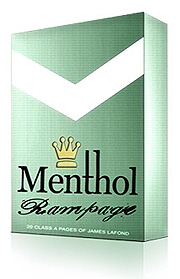

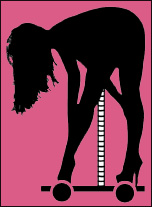
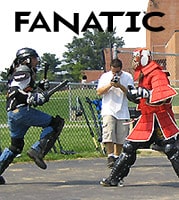
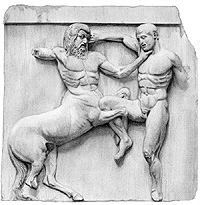

excellent article,bringing back memories of how things use to be and the reality of every bullied kid to believe that there are magic ways to defeat their tormentors
Thank you Alex, and thank you for reminding me that I wrote this. I need to check it for typos.
Look, no one wanted more than I to believe that there was an answer to being bullied [check out the Rise serial on my fiction page. That is mostly autobiographical]. I was suspicious of the martial arts scene for two reasons: it was an adult operated thing, and those very adults were the ones turning their heads away from my bullied plight, and I had just discovered me key to being bullied; tenacity, which was something that the martial arts crowd seemed to willfully bypass as beneath consideration.
When I was 11 my 16-year-old cousin kept throwing me into the surf at Ocean City Maryland as my family lounged on the beach. I was swallowing sand and water through my nose and mouth, really afraid I would drown. I kept crawling out of the surf which had a wicked under-toe that day, only to end up on all fours looking at his feet. He would pick me up and throw me back in. I would land at the bottom of the wave crest usually on my back and begin the process of crawling out of the surf again. Eventually his feet were no longer there. I had outlasted my tormentor.
That night my mother turned on the Ali versus somebody fight. I hated Ali because he was a big guy that made fun of smaller guys. But on the under card was Roberto Duran, talking in his interview about having eaten a whole bunch of stolen bananas and then almost drowning as he swam back across a body of water, and how that is when he discovered the key to victory inside himself. Duran destroyed his never-before-knocked out opponent with one liver punch, and declared he would send him to the morgue the next time as the fighter was taken out on a stretcher. That is what set me on the boxing-tenacity road to dealing with bullies and made me suspicious of the artistic solution.
Interestingly that program mentioned was/is mine and that incredulous student was mine as well. I would clarify that although Bruce Lee is a God to many, I am abundantly clear on his ability and his lack of ability, and that was always translated to our students. Exactly why I always stress the need to be effective in all ranges with boxing being the primary standing range. Their should never be a misconception about the effectiveness of a reality based system versus a "fantasy" based system of miraculous exotic technique which is never really proven in combat. Interesting as well that it was Bruce Lee that would watch Ali in a mirror since Lee fought strong side forward (right lead). So he would mirror Ali, one of his idols. It was Bruce Lee that recognized the pure brutality and effectiveness of boxing which is why his system is based on the basics of boxing footwork, fencing and savate footwork and stance. He recognized his own limitation and often stated that Ali would destroy him. True, he would have. Bruce's greatest contribution to MA was the integration of reality based systems (boxing, wrestling etc) into traditional arts. Having been one of those students brought in the Filipino system as well, I realized quickly the insanity and ridiculousness of fighting with a stick and padding everywhere that you can't feel the stick. My first full contact no gear stick bout was indeed enlightening, but addictive. I still train students in the suits because it has its place. But like someone else said, "if you want to swim you have to get in the water." My brother and I fought on two occasions with no gear and a full contact stick bout. Reality hits hard, and so does a stick on the head, particularly when you see the blood and feel it attached to the pain. I agree whole heartedly with your comments and sentiment. THere are actually many out there who still stress reality and recognize fantasy for what it it. Thankfully, you point it out for which all should be grateful. Yes, I remain a Bruce Lee fan, an Ali fan, a Duran fan, as I consider Boxing a real martial art. Karate and gung fu, as well as Filipino martial arts can be real too, or nonsensical and just dances in the air. Like you say, "cultivated dread of the dreamer." A great statement I would ask to borrow. Fantasy is not reality. For too long too many lived in fantasy land and their perception of their martial art was just that, perception. Perception is not reality. Great piece. Thanks
Thanks for the feedback and clarifications David.
I might add that all of these people from my youth and early adulthood who made up these stories and the one guy who claimed to have trained with Lee [I strongly suspect], never knew the guy, and did not practice what he preached. To them he was just a hypothetical celebrity wedge against their fears.
In reading the Tao of Jeet Kune Do I came to the conclusion that Lee had studied Jack Dempsey's book Aggressive Punching and Championship Boxing. Indeed Dempsey taught vertical fist punching.
I'd be honored to have you quote that passage or even rip it off.
The student was the hyperaggressive offensive tackle whose favorite stick-fighting technique was a running clothesline!
Take care.
Fascinating overview. One thing that profoundly influenced the growth of the oriental martial arts in America was the fact that boxing disappeared as an amateur sport from most of the country during the 1960’s and ‘70’s. For example, my father fought on his high school boxing team just before WWII. When I attended that same high school 26 years later there was no such thing as a high school boxing team, anywhere in the state. Shortly after University of Wisconsin middleweight boxer Charles Mohr died from injuries he received in a championship match, on April 17, 1960, the NCAA banned boxing as an intercollegiate sport. All the high school sports associations quickly followed suit and boxing as a scholastic sport was no more. Amateur boxing persisted only in the major urban areas, largely supported as a means of steering poor urban youth away from a life of crime, as you pointed out. Interest in scholastic folk-style wrestling expanded for those boys seeking competition in combative sports; but that style of wrestling taught you how to tackle and pin your opponent without hurting him, not how to hit and avoid being hit. Post WWII scholastic wresting bore little resemblance to the “catch” or “scientific” wresting of the early 20th Century. Simultaneously the crime rates in the country increased over a hundred per cent during this time period; all at a time when the venue that enabled most American boys to learn “the manly art of self-defense” was shut down. Various oriental martial arts associations were poised to fill this void in self-defense instruction. There was no longer any place to learn boxing, so where else could a young man in a small town or suburb go to learn how to fist fight but at one of the newly opened store-front Karate or Tae Kwon Do dojos in his community? Plus the oriental martial arts purported to teach a “better way”. Who didn’t want to learn how to wipe out an opponent with one sneaky trick? All without getting bruised up, getting your clothes torn up or even losing your hat. Such a promise was especially appealing to un-athletic types who kept getting bested by stronger, faster and more-coordinated opponents. Furthermore, women approved of karate over boxing since karate didn’t involve hitting in the face. Keep in mind that mothers gained a lot more say over what types of sports their sons would be allowed to participate in during this period. Judo had been around for a while and was even an intercollegiate sport, but there was no place you could find Judo instruction in fly-over land in those days. Anyway, if the people studying classical Karate, Kung Fu and Tae Kwon Do got sold a bill of goods back in the day, this was principally a result of the Liberal ruling class having eliminated effective competition from the traditional western combat sports. I can’t help but wonder how the evolution of the oriental martial arts might have proceeded if the various dojos had faced competition from scholastic boxing back when they were first getting established in this country some 50 years ago.
Thanks Jeremy.
One of the best boxing manuals was a WWII era collegiate manual by an instructor out of the mid-west—Wisconsin or Michigan, easily as good as the Navy manual. I own a post card from a 1940s high school showing boys lined up to box!
Outside of urban areas there is still an extreme paucity of striking skill. At a recent local pro MMA event I sat next to a karate man and his wife. She predicted the course of the fights by hometown alone. A city guy versus country guy was a striker versus wrestler matchup or a jiu jitsu versus wrestler match every time.
The other factor in the demise of boxing was TV broadcasts which funneled the money right to the top fighters, leaving very few local fight venues even in urban areas, eventually gutting the fighter pool.
I was lucky to find an old pro who was willing to train two kids just to keep the art alive. However the karate instructor that shared the furnace room at the YMCA where the two punching bags were, had 3 times the students.
Excellent information as always Mister Bentham.
You're welcome James.
Oh, I forgot to mention that the Armed Forces remained bastions of amateur boxing during the 1960’s, ‘70’s, and '80's, both in the active services and in the service academies. As evidenced by the Navy manual on boxing you mentioned (although I must imagine that was the academy manual from the 1940’s). But as fewer men came into the service with previous boxing experience, interest waned. People tend not to pursue sports in adulthood that they haven’t practiced as a child. Their pride gets in the way of course; few people can tolerate the indignity of looking like a struggling rookie when they are supposed to be “all grown up”. As time passed it became more difficult to find boxing coaches as well. There may be renewed military interest in boxing now that the Army has revamped its hand to hand “combatives” program (based largely on Brazilian Jiu Jitsiu now) and set up intra-service and inter-service MMA style competitions to encourage further study and sparing practice.
My coach and a manger I was couching for back in 2003 both attended sparring sessions at the Naval Academy in Annapolis that they claimed was state-of-the-art. I was told that many of the boxers were marines. I also worked a corner for a company versus company team boxing match at [I think] the Edgewood Arsenal up near Aberdeen Proving Grounds back in 2004. This was a base-level initiative promoted by a former Marine Corp boxer who stuck me with working the corner for the team whose entire company was on deployment. There is little in boxing more exciting than working the corner for the kid who has five hundred people screaming for his opponent to knock his head off. This was a lot of fun. They awarded the corner man I was assisting an honor for his Korean service, which was met with great applause. He had been 100 and 0 as an amateur when his career was interrupted by the war.
I am always interested in any boxing developments from the military. My brother was on the army team in Italy in the early 1980s. My research on boxing origins ties much of the sport's evolution and various resurrections into military culture.
As always thanks Jeremy.
I think the lack of boxing skills is because getting pounded in the head is not good for you and it hurts.
And to complete the flashback to those Bruce Lee days...
youtube.com/watch?v=yRtrCq6LWt8
Tex
(who was there as well)